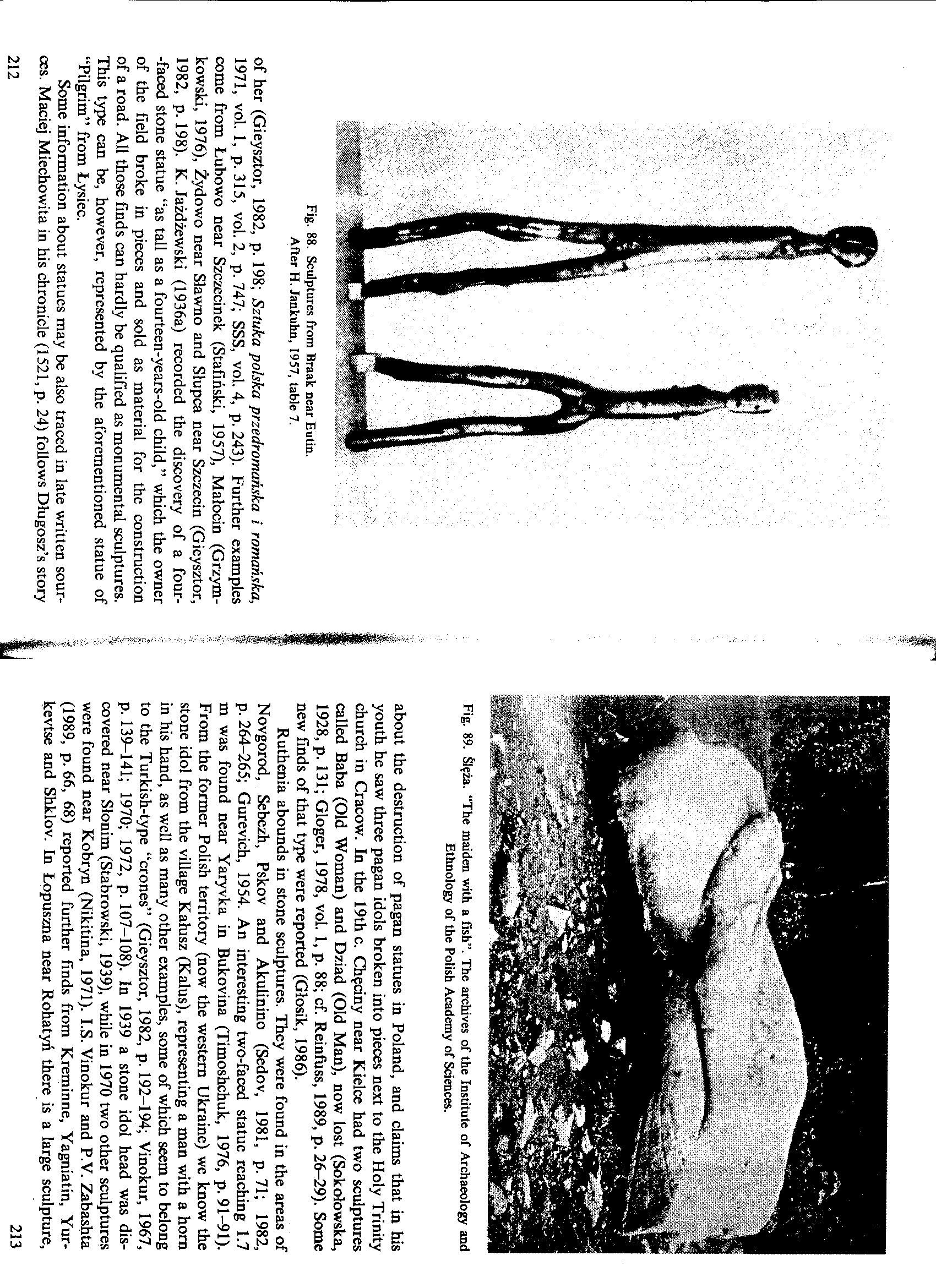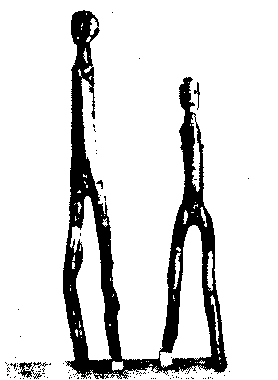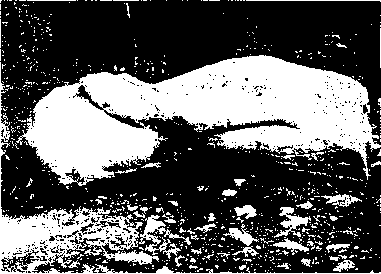image105


Fig. 88. Sculptures from Braak near Eutin. Afler H. Jankuhn, 1957, table 7.
i
of her (Gieysztor* 1982, p. 198; Sztuka polska przedromańska i romańska, 1971, vol. 1, p. 315, vol. 2, p. 747; SSS, vol. 4, p. 243). Further examples come from Łubowo near Szczecinek (Stafiński, 1957), Małocin (Grzym-kowski, 1976), Żydowo near Sławno and Słupca near Szczecin (Gieysztor, 1982, p. 198). K. Jażdżewski (1936a) recorded the discovery of a four--faced stone statuę “as tali as a fourteen-years-old child,” which the owner of the field broke in pieces and sold as materiał for the construction of a road. Ali those finds can hardly be ąualified as monumental sculptures. This type can be, however, represented by the aforementioned statuę of “Pilgrim” from Łysieć.
Some information about statues may be also traced in late written sour-ces. Maciej Miechowita in his chronicie (1521, p. 24) follows Długosz’s story
212

Fig. 89. Ślęża. “The maiden with a fish”. The archives of the Institute of Archaeology and Ethnology of the Polish Academy of Sciences.
about the destruction of pagan statues in Poland, and claims that in his youth he saw three pagan idols broken into pieces next to the Holy Trinity church in Cracow. In the 19th c. Chęciny near Kielce had two sculptures called Baba (Old Woman) and Dziad (Old Man), now lost (Sokołowska, 1928, p. 131; Gloger, 1978, vol. 1, p. 88; cf. Reinfuss, 1989, p. 26-29). Some new finds of that type were reported (Głosik, 1986).
Ruthenia abounds in stone sculptures. They were found in the areas of Novgorod, Sebezh, Pskov and Akulinino (Sedov, 1981, p. 71; 1982, p. 264-265; Gurevich, 1954. An interesting two-faced statuę reaching 1.7 m was found near Yaryvka in Bukovina (Timoshchuk, 1976, p. 91-91). From the former Polish territory (now the western Ukrainę) we know the stone idol from the village Kałusz (Kalus), representing a man with a hora in his hand, as well as many other examples, some of which seem to belong to the Turkish-type “crones” (Gieysztor, 1982, p. 192-194; Vinokur, 1967, p. 139-141; 1970; 1972, p. 107-108). In 1939 a stone idol head was dis-covered near Słonim (Stabrowski, 1939), while in 1970 two other sculptures were found near Kobryn (Nikitina, 1971). I.S. Vinokur and P.V. Zabashta (1989, p. 66, 68) reported further finds from Kreminne, Yagniatin, Yur-kevtse and Shklov. In Łopuszna near Rohatyń there is a large sculpture,
213
Wyszukiwarka
Podobne podstrony:
carving?ceC 1Rangę of Expressions 43 Fig. 87 (Detail from Box of Delights) Fig. 88 Shylock
image104 Fig. 86. Jankowo. a: The location (after W. Hensel, 1953, p. 188). b: A wooden sculpture of
image107 Fig. 102. The idols from Stavchany and the place where they were found. a - stones; b - bur
image108 Fig. 104. Sviatovid frora Zbruch. Aft er A. Gieysztor, 1982, p. 94. from Altfriesack, Fisch
154 L. B. KENNY Fig. 1 : Hariri ship from a MS.jof al-Hariri’s Maąźmśi drawn by a Mesopotamian artis
carving?ce@ 40 Rangę of Expressions Fig. 82 (Dęta i I from Mariili on) Fig. 84 shows a variety of an
image094 Fig. 75. The Krak Mound near Cracow. Photo L. Słupecki. is banished, and as the małe linę i
image102 Fig. 82. Fischerinsel. The female figurę, a - the front view, b - the side view. After E. G
image106 Fig. 90. Ślęża. “The Boar”. The archives of the Institute of Archaeology and Ethnology of t
K29 (4) JAN ihtl.KsEN. H.-F. KI. fftłssa Fig. 88. Kjolstad, Nes, Akh. i°5 Av andre vaaben som forek
89788 image108 (8) Fig. 94. Wolgast. Gerovitstein. St Peter’s church. After Kunst und Kultur der Sla
48770 image107 (8) Fig. 92. Altenkirchen. Jaromirstein or “Svantevit”. After Kunst and Kultur der Sl
więcej podobnych podstron